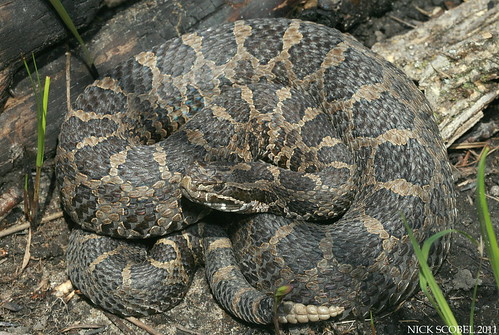Chrysosporium is a prevalent infection within the pet trade and is a common infection that effects lizards, snakes, and sometimes humans. However, this is the first time that an infection from the fungus has been documented in a population of free ranging snakes. But similarly infections have been documented in Timber Rattlesnakes in the northeastern United States. It is concerning that this pathogen has emerged in snakes as different type of fungus like chytrid fungus have caused massive population declines in amphibians.
However, at the end of the day is unclear as to what the emergence of this infection has in store for other Massasauga populations. The affected population is extremely small and isolated and suffers from a high frequency of inbreeding events. It's possible that this population was more susceptible to infectious disease because of immunosupression due to poor genetic diversity and healthier populations may have nothing to worry about for the time being. But in any case further research is needed to better understand this pathogen and its effect on snake populations, including the Eastern Massasauga.



This comment has been removed by the author.
ReplyDeleteThese tips and advices are really very much effective for fungal infections. Keep it up with sharing such useful information with us. Thanks for the post.
ReplyDeleteanti fungal medicine
What a good blog you have here. Please update it more often. This topics is my interest. Thank you. . .
ReplyDeletejohn